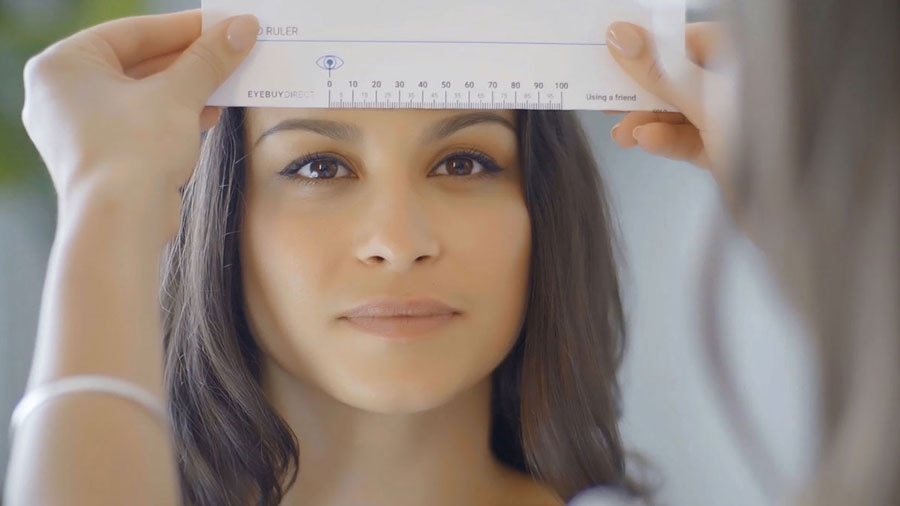How to Measure Pupillary Distance (PD)
You'll need to know your PD if you want to order new glasses online from Eyebuydirect. Don't worry if your glasses prescription doesn't include your PD, we can show you how to measure it by yourself at home. It’s easy to measure PD online — all you need is a mirror and our printable ruler, available to download below. You can also measure friends’ sizes and have them assist with telling you yours. If you’ve ordered prescription eyewear online with us before, you may have asked yourself, “what’s my PD and how do I measure it?” You can usually find your pupillary distance on your prescription, but if it’s missing, we can help!
What is PD?
PD, or pupillary distance, refers to the distance in millimeters between the center of one pupil to the center of the other. Having a correct PD on your glasses prescription ensures that you’re looking through the ideal spot in your lenses, so it’s important to know what is PD. If this number wasn’t provided on your prescription by your eye care professional, you can measure it yourself. So, if you’re wondering how to find pupillary distance, it’s easy to do! Use our printable ruler below then follow the simple steps to find out what yours is. Once you know what pupillary distance is, you’ll be seeing clearly through the correct part of your lenses and never look back!

How to measure PD
Measuring your PD can easily be done at home. Take our PD ruler and use it on a friend to measure their far distance PD. Fold the ruler to the side that says “Using a friend” and have them sit down and focus on something 10-20 feet ahead to keep their eyes steady. Next, place the PD ruler against their forehead and align the zero with the center of their right pupil and cover your left eye for focus. The number above the center of their left pupil is their PD.
PD measurement online
If you’re alone, it’s also easy to measure pupillary distance online by yourself. All you need is our PD ruler and a mirror. Stand about 8 inches or 20cm away from the mirror and hold the PD ruler over your eyes centering the zero over your left pupil. Cover your left eye and the number directly over your right pupil is your PD. If you’re looking at shopping for progressives or bifocals, you’ll need your near distance PD as well. This time, have a friend help you measure pupillary distance online for the most accurate reading. Instead of focusing on an object 10-20 feet away, have your friend hold a pen between you and them. Focus on the pen and your friend can read your PD.
Measure PD yourself
How do I find my PD for glasses?
PD is the distance in millimeters from the center of one pupil to the other. Your PD is an important factor in ensuring the center of each lens of your glasses goes directly over your pupils to cover your eyes correctly. For people with high powered lenses, this is especially important. If your prescription includes your PD, it will normally be listed as one number — 64 for example. If there’s a difference in measurement between the bridge of your nose and the center of each eye, your PD may also appear as two numbers — like 32 and 31. This is your PD separated for each eye.

What's the average pupillary distance for women and men?
The average pupillary distance for women and men falls somewhere between 48mm and 73mm. The average pupillary distance female and average male pupillary distance considers age and gender. The average PD for women is about 60mm. The average PD for men is about 64mm. However, normal pupillary distance is different for everyone, so the values above can be far from your own PD.
Single PD vs Dual PD
So, what’s the difference between single PD vs dual PD? While single PD is the distance between the center of one pupil to the center of the other, dual PD is the measurement between the center of each pupil to the nose bridge. The two numbers in a dual PD represent each of those distances, with the right eye appearing first. Measuring your PD, or interpupillary distance, is important for knowing which size glasses to get and making sure you’re looking through the correct part of your lenses.















